The two men were waiting for her when she reemerged into the office area. Anna lit a kerosene lamp. The station had Colemans but she didn’t plan to spend enough time with the Canadians to make the effort of lighting one worthwhile.
Cold water divers were, of necessity, lovers of equipment. Anna noticed that “Bobo”-the taller of the two but just barely, his round face darkened by a well-trimmed beard- wore a watch that had everything in it but a micro fax machine.
She got the forms from her desk. “Where do you want to dive?”
“The Emperor .”
Anna started her spiel on danger and difficulty, but the one called Bobo cut her off. “We heard the lecture from the ranger in Windigo. We dove the Kamloops today.”
The Kamloops was the most dangerous dive on the island. At depths from one hundred and seventy-five to two hundred and sixty feet, the wreck was beyond the reach of all but the most experienced divers. Or outlaw divers; people who threw caution-and sometimes their lives-to the wind.
“You’ve racked up some bottom time,” Anna said. “Is this going to give you a long enough surface interval?” The pressures at the depths where the Kamloops dwelt were such that oxygen and nitrogen were forced into solution in the human body, dissolved in the blood and fatty liquids much as carbon dioxide is forced under pressure into soda pop. When divers surfaced, returning to the lesser pressure above the water, those gasses re-formed from a liquid to a gaseous state much like the fizz when a soda pop is opened. If divers surfaced slowly, according to established ascent stages, the gasses worked out slowly and were exhaled harmlessly. If not, they formed bubbles in the bloodstream causing symptoms called the bends which were painful and occasionally fatal.
Regardless of the timing of the ascent, there was always a small residue of nitrogen still in the body. Twelve hours was the rule of thumb between dives more than a couple of atmospheres down.
“We know our numbers,” Bobo said.
Anna shrugged and wrote “ Emperor” in the space provided.
“Did you know there were bodies down there?” Jon asked as Anna handed him a copy of the permit. “On the Kamloops?” Bobo looked annoyed, as if Jon were telling family secrets.
“Yeah,” Anna returned and Bobo looked disappointed. “Part of the crew was trapped on board when she went down.”
“They’re weird-looking,” Jon said. “Like wax.”
“The corpses are saponified,” Anna told him. “It’s called an adipocere formation. It’s fairly common with submerged bodies. The soft tissues get converted to a waxy stuff. Don’t ask me how. Their still being like that after over sixty years is a little strange, but it’s happened before in the Great Lakes.”
For divers accustomed to the sometimes centuries-old wooden-hulled vessels in the Caribbean, the preservation of Superior’s treasures often surprised them. Geology and geography conspired to entomb the ships in an almost ageless death. In the deep, still, cold, freshwater canyons beneath the lake’s surface no coral could grow, no surf could batter.
“Everything on the ship is like that-in a time warp,” Jon went on. “We must’ve seen a hundred pairs of shoes. They looked like if you dried them out you could wear them home.”
“Did you try them on?” Anna asked casually.
Both divers looked offended. “We did not try them on,” Bobo said with cold dignity.
“Just asking.” Taking artifacts from shipwrecks was a sport-a business for some. Before Isle Royale was made a national park in 1940, it wasn’t illegal. By the time most of the wrecks were protected a lot of their scientific and historical value had been destroyed by treasure hunters. As had some of the joy of discovery for the divers who came after the depredations were committed. Vandalism and theft continued to be a problem. The Kamloops , so inaccessible, so long lost, was like a time capsule. The Park Service hoped to keep her that way.
“One of the bodies was incredible,” Jon said. “He looked like he’d drowned yesterday. Clothes like new, hair-everything was still perfect.”
Anna doubted that. The bodies were recognizable as human but in a featureless kind of way. One’s head was missing, several had limbs from which the flesh had dissolved away, leaving only stumps of bone protruding. The clothing was preserved but by no stretch of the imagination “like new.”
“Mmm,” she murmured, willing them to take their permit and go away.
“The other five were a little the worse for wear, eh?” Jon said.
“There’s just the five,” Anna said. “Total.”
“No,” Bobo returned, sounding pleased to correct her. “There are six.”
“Did you manage to open the stern room?” Anna asked. She couldn’t imagine they had. The entrance was blocked with tons of debris. But the NPS Submerged Cultural Resources Unit out of Santa Fe speculated that there could be as many as a dozen more corpses there-men trapped when the ship foundered.
“This was the engine room,” Bobo said, his tone daring her to challenge his knowledge of anything underwater.
“Six?” Anna said. “Well, stranger things have happened…” She was too tired to stand and argue. Nitrogen narcosis, shadows, imagination-at a hundred and seventy-five feet who knew what they thought they saw? Anna didn’t really care.
Her agreeing without believing stung Bobo. “You wait,” he commanded and trotted out the door. Jon shrugged his heavy shoulders in a gesture that was so French as to be a parody.
Anna waited, thinking of the wine on the counter, of her flannel sheets. The hands on the desk clock found one another at midnight. Jon hummed a little song to himself and poked through the rack of brochures.
Bobo came back with an underwater videocamera. He pushed the machine at Anna. “Look,” he demanded. Anna pressed her eye to the viewfinder. “Body number one,” he announced and she saw a pale headless apparition lit by the unforgiving glare of an underwater lamp. Bobo took the camera back and pushed fast forward, his attention fixed on a digital readout window. “Body number two.” He thrust the camera into Anna’s hands once again. A drift of amorphous remains clad in what looked to be overalls floated on the tape. “Number three,” Bobo said after repeating the fast-forwarding process. Another dead Pillsbury doughboy in dark clothes. Anna smiled. The fingers of the left hand had been folded down, all but the middle finger. She’d heard divers sometimes flipped a macabre and ghostly bird to the next guy down. “Four and five,” Bobo said, working his video magic again. Two more remnants, faceless, one with no arms. “And six.” Bobo handed Anna the camera a final time.
She pressed her eye to the viewfinder until black clouds troubled her vision. Then she set the camera carefully on the desk. “I’m going to need this tape,” she said. She reached over the desk and lifted the permit from Jon’s fingers. “And I’m going to have to ask that you do not dive the Emperor tomorrow morning, that you remain here. I’m sure the Chief Ranger will have some questions to ask you.”
Again she lifted the camera and pressed her eye to the viewfinder. Number six was indeed well preserved. Though the clothing was right for a sea captain of the early part of the twentieth century, it looked new. Shadows hid most of the face but the lips and chin were sharply defined and a cloud of light-colored hair floated out from beneath the cap the figure wore.
Number six had not gone down in the storm of 1927.
Like I said, I couldn’t tell who it was-or supposed to be,“ Anna told Lucas Vega. ”Caucasian from the color of the hair. Male attire, if that means anything. It was impossible to tell size from the video. It was just a dark body floating against a darker background. There was nothing close enough-and in focus-to compare it with.“
Читать дальше

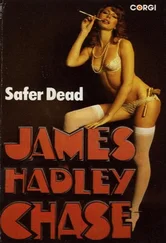
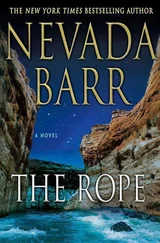

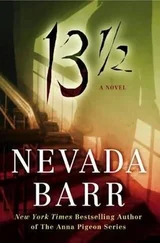



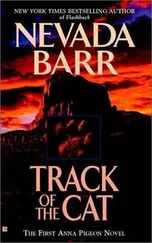
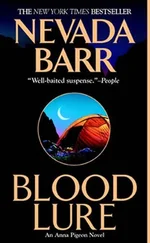
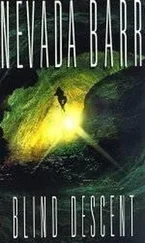
![Джеймс Чейз - Safer Dead [= Dead Ringer]](/books/430347/dzhejms-chejz-safer-dead-dead-ringer-thumb.webp)
